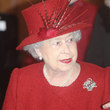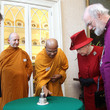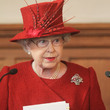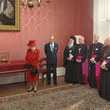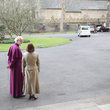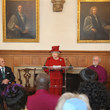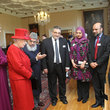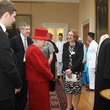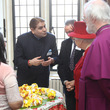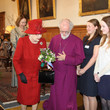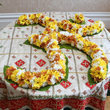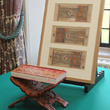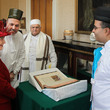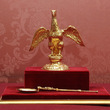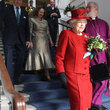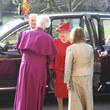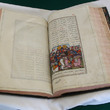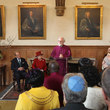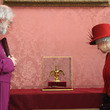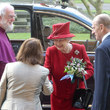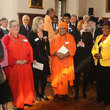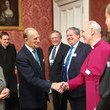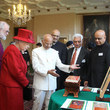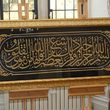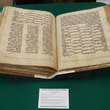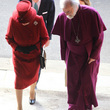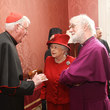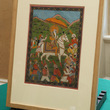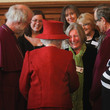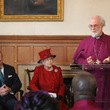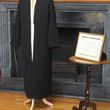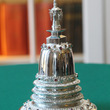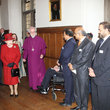Faith communities display sacred objects to the Queen
Wednesday 15th February 2012
The Archbishop of Canterbury welcomed HM the Queen and HRH the Duke of Edinburgh to a multi-faith event at Lambeth Palace.The Archbishop and Mrs Williams presented leading representatives of the historic Faith Communities in the United Kingdom to Her Majesty and His Royal Highness.
The royal couple met representatives of the eight non-Christian religions - the Baha'i, the Buddhist, Hindu, Jain, Jewish, Muslim, Sikh, and Zoroastrian communities - as well as Christian representatives. Each group of faith leaders was gathered around a sacred object selected by them for display at the Celebration as an object of particular significance to the faith or practice of their community, or their life in the United Kingdom.
The reception was one of the Queen's first public engagements to celebrate her Diamond Jubilee year, and was an opportunity for the religious communities to gather together and express their respect for Her Majesty as monarch, and affirm their commitment to one another in dialogue and to the service of the nation as a whole.
Information is attached about all the sacred objects displayed by faith communities to HM the Queen. There are two documents - the first one is text-only; the second one includes images of the faith groups with their sacred objects and the Queen. There is also a gallery of photos.
The Christian community displayed the Coronation Anointing Objects: the Ampulla and Spoon.
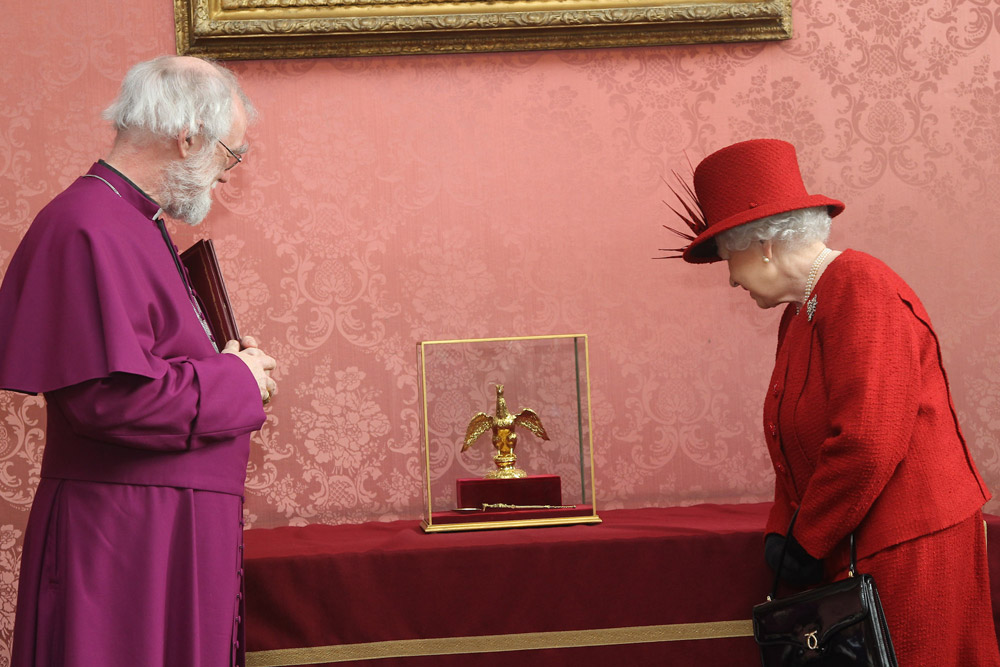
The Archbishop spoke about the Ampulla and Spoon on behalf of the Christian denominations:
Your Majesty, Your Royal Highness,
Honoured Guests:
As representatives of the Christian Churches in the United Kingdom, we are very happy to greet you on this very special occasion, with our prayers for your wellbeing and our thanks for your dedicated service.
Anointing is a central element in the Coronation ritual, deriving ultimately from Hebrew tradition. In the Western Catholic Church, it was the Anglo-Saxons who were among the first to make this a focal moment in the inauguration of a new monarch. It is a ritual that connects every level and variety of Christian ministry. It is a sign of the Church recognizing a distinctive calling or ministry. Traditionally, all those who are baptised are anointed, and priests and bishops receive anointing with specially consecrated oil, over which prayers have been said at the liturgy of Maundy Thursday, the day when we recall Jesus’ act of service to his disciples at the Last Supper. Anointing declares both that a calling is recognized and also that the Holy Spirit enters into the exercise of that calling.
Thus the gift of the Spirit is not only to give strength to fulfil a vocation, but to direct it always to the selfless service of the community. Royal anointing, which has survived unbroken in English usage, thus underlines a strong doctrine of both the monarch’s answerability to God and his or her calling to serve the cohesion and peace of the national community – themes spelled out for Anglicans in the Book of Common Prayer’s petitions for the monarch in the Communion service (as also in the prayers used in the House of Lords). And it connects the monarch’s calling with that of every Christian and every ordained minister.
More about the Coronation Anointing Objects:
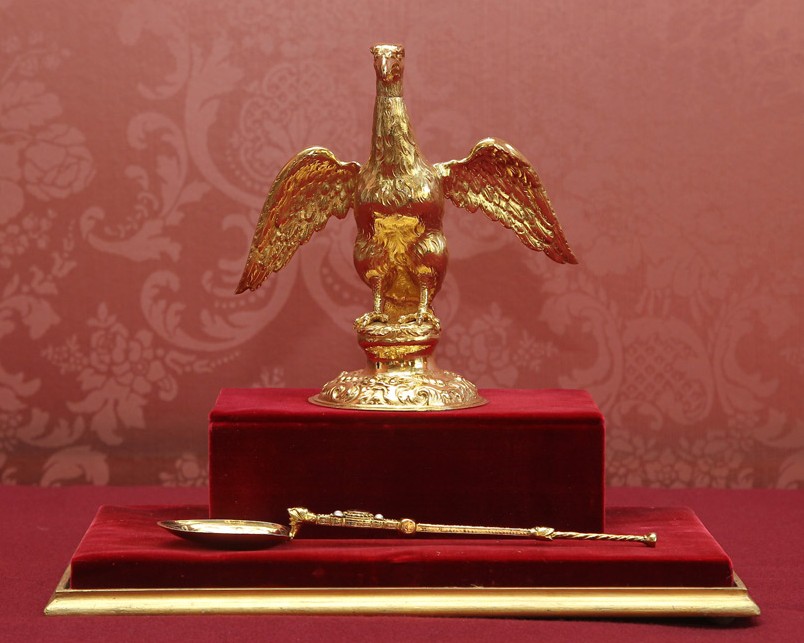 By gracious consent of Her Majesty The Queen,
By gracious consent of Her Majesty The Queen,
and the assistance of the Royal Collection and HM Tower of London
After the acclamation and the oath, but before being invested with the regalia, the monarch is anointed. The Archbishop of Canterbury pours holy oil from the Ampulla into the Coronation Spoon and anoints the sovereign, who is seated in King Edward’s Chair, on the hands, breast and head, while recalling the anointing of King Solomon in the Old Testament.
The Ampulla
The gold Ampulla (1661; 20.7 x 10.4 cm), which holds the consecrated chrism or holy oil with which the sovereign is anointed during the coronation ceremony, was supplied by Robert Vyner in 1661 for the coronation of Charles II to replace that destroyed in 1649 during the Commonwealth period. The medieval ampulla was supposed to contain the oil given to St Thomas à Becket by the Virgin for the coronation of the kings of England. This phial of oil was mounted in a golden eagle in the 14th century, but it was clearly much smaller than the current Ampulla as Richard II was able to wear it about his neck as a pendant. In the inventory of goods taken to the Tower of London to be sold in 1649, the ampulla appears as ‘a Dove of gould sett with stones and pearle’. The new Ampulla by Vyner is also in the form of an eagle: the head screws on to the body and the oil is poured through a hole in the beak. It has been used at almost every coronation since 1661.
The Coronation Anointing Spoon
The silver-gilt Coronation Spoon (1250 to 1300; 26.7cm long) is the only piece of the medieval coronation regalia to survive the seventeenth-century Interregnum. Already considered to be ‘of ancient form’ in the mid-14th century, the spoon was probably made in the second half of the 12th century and is the only piece of royal goldsmith’s work to survive from that century. The bowl of the spoon is engraved with acanthus leaves, while the handle takes the form of a monster’s head where it is attached to the bowl. Before the Civil War the spoon was kept among St Edward’s regalia at Westminster Abbey. Although its original purpose is unclear, it was certainly designed for ceremonial use, and its presence in St Edward’s Regalia indicates it was connected with coronations from an early date. In 1649 it was sold for 16 shillings to Clement Kynnersley, one of Charles I’s Wardrobe officials. At the Restoration, a new spoon was made in preparation for Charles II’s coronation but before the event took place Kynnersley returned the medieval original. The medieval spoon was then set with four pearls and used at the coronation. Since the Restoration, it has sometimes been known as the ‘Anointing Spoon’ and the archbishop has poured holy oil into it from the Ampulla for the anointing. However, it may be that the spoon was originally used for mixing water and wine in a chalice.
Other Faith Communities
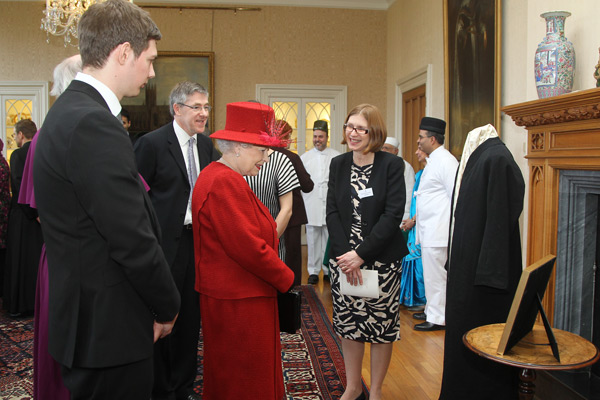
Baha'i guests and their sacred object - the Robe of ‘Abdu'l-Bahá
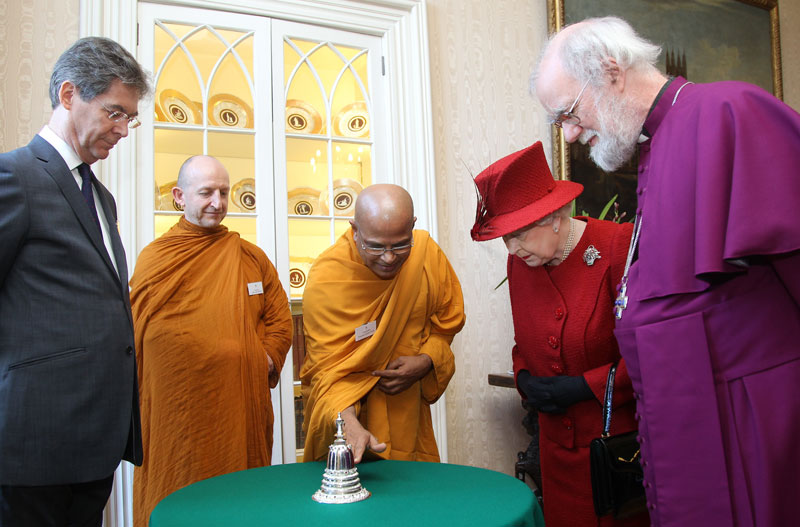
Buddhist guests and their sacred object - a silver Stupa
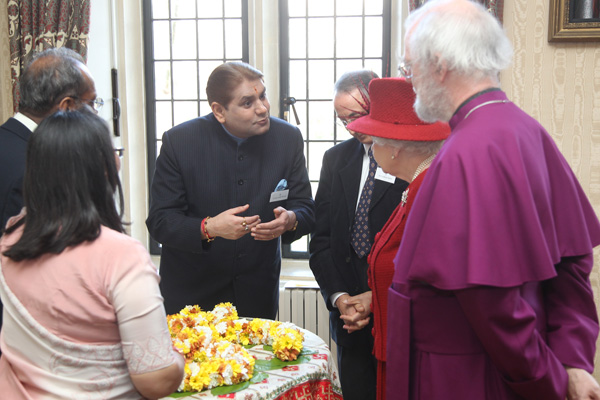
Hindu guests and their sacred object - a floral representation of the ‘OM’
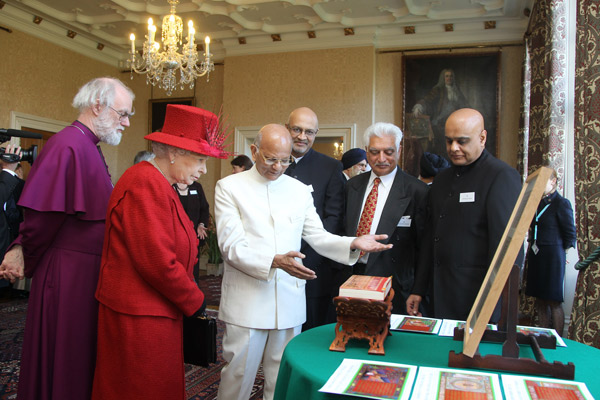
Jain guests and their sacred object - the Kalpasutra (Book of Rituals)
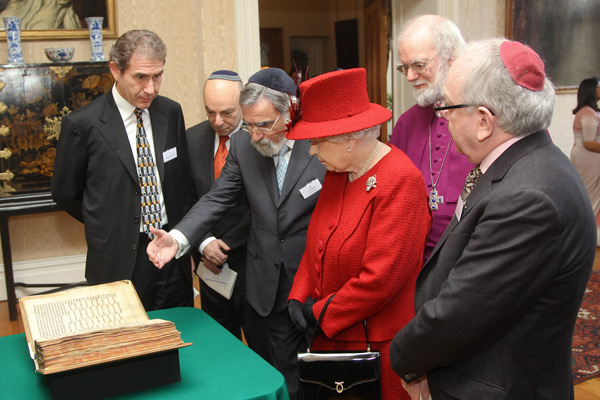
Jewish guests and their sacred object - the Codex Valmadonna I

Muslim guests and their sacred object - a Holy Piece of Kiswah
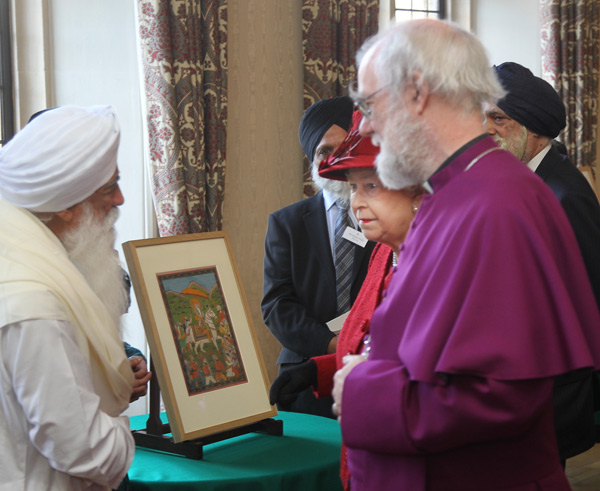
Sikh guests and their sacred object - painting of Maharaja Ranjit Singh
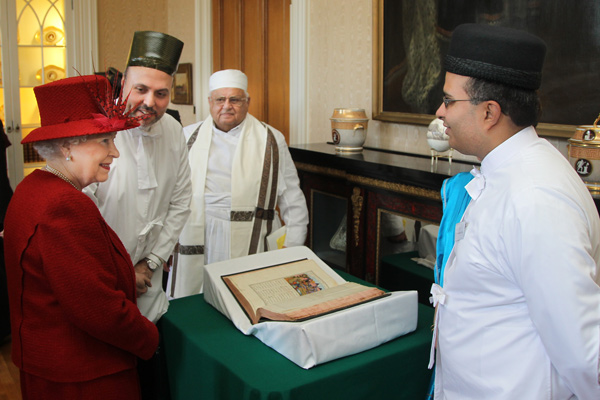
Zoroastrian guests and their sacred object - Shahnameh (Book of Kings)

